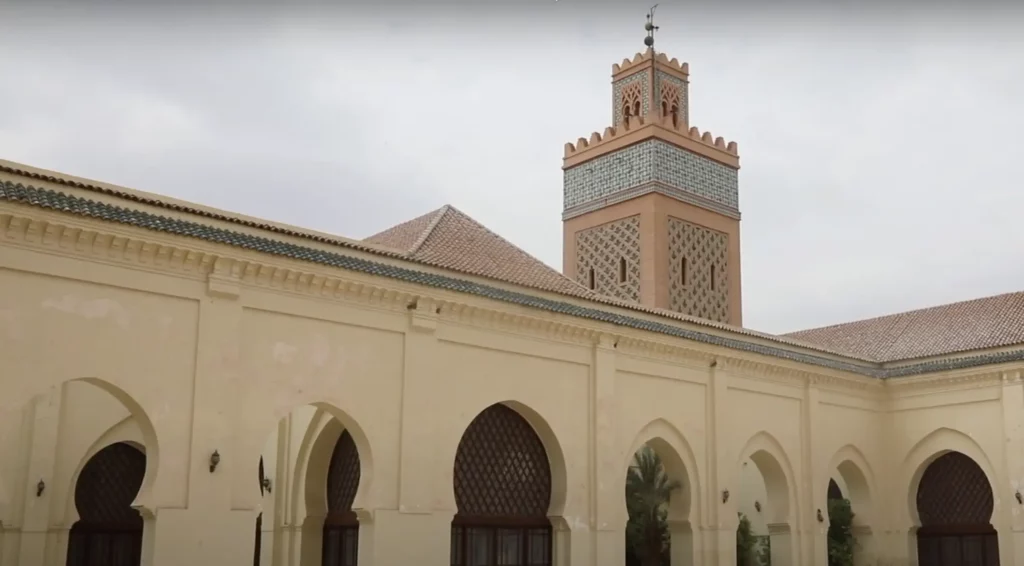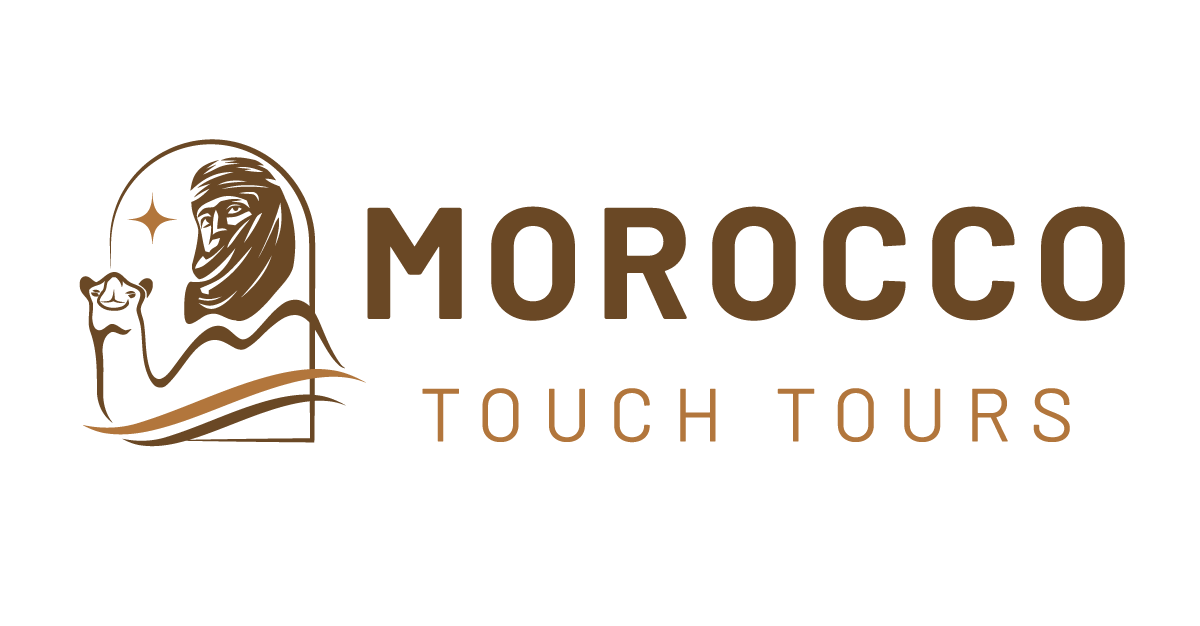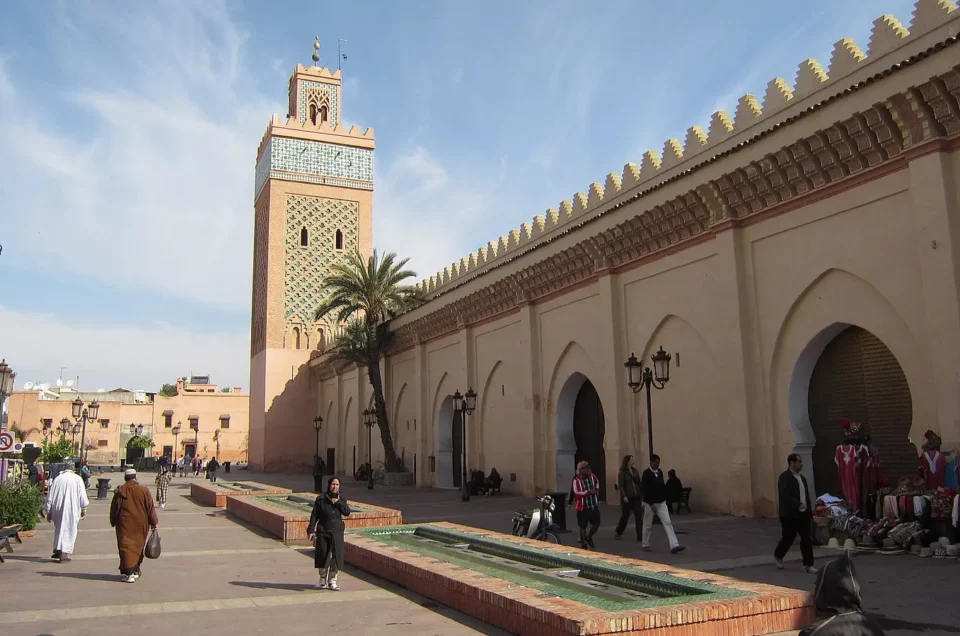Marrakech is a city rich in history, culture, and architecture. One of the most impressive and important buildings in the city is the Kasbah Mosque, a historic mosque that dates back to the 12th century. The Kasbah Mosque is not only a place of worship, but also a symbol of the Almohad dynasty, the Saadian dynasty, and the Moroccan identity. In this article, we will explore the history, architecture, and significance of the Kasbah Mosque, as well as some tips on how to visit this magnificent monument.
History of the Kasbah Mosque
The Almohad Origins of the Kasbah Mosque

The Kasbah Mosque was built by the Almohad caliph Yaqub al-Mansour in 1185-1190 CE, as part of his new royal district or kasbah (citadel) in Marrakech. The Almohads were a Berber Muslim dynasty that ruled over most of North Africa and parts of Spain and Portugal from the 12th to the 13th century. They were known for their religious zeal, military prowess, and architectural achievements. Yaqub al-Mansour was one of their most successful and powerful rulers, who expanded the empire and patronized arts and sciences.
The Kasbah Mosque was designed to be the congregational mosque for the caliph and his court, as well as for the residents of the kasbah. It was also a symbol of his authority and prestige, as it was one of the largest and most ornate mosques in the Islamic world at the time. The mosque was built in the Almohad style, which was characterized by simple geometric forms, brick and stone materials, horseshoe arches, ribbed domes, and square minarets. The mosque also featured elaborate stucco decoration, carved woodwork, and ceramic tiles.
The Saadian Legacy of the Kasbah Mosque
The Kasbah Mosque was held in high esteem by subsequent rulers and dynasties, who continued to use it as a royal mosque and a burial site. The most notable of these were the Saadians, who ruled Morocco from the 16th to the 17th century. The Saadians were also Berbers, who claimed descent from the Prophet Muhammad and revived the glory of the Almohads. They built their own royal necropolis next to the mosque, which is known today as the Saadian Tombs. The Saadians also restored and renovated the mosque after it was severely damaged by an explosion at a nearby gunpowder store in the late 16th century. The stucco decoration that can be seen inside the mosque today is mostly from this period.
The Historical Role of the Kasbah Mosque
The Kasbah Mosque remained an important religious and cultural center throughout the centuries, even after Marrakech lost its status as the capital of Morocco. It witnessed many historical events, such as royal ceremonies, political protests, and social gatherings. It also served as a place of learning and scholarship, where many famous scholars and saints taught and studied.
Architectural Splendor

The mosque’s exterior is a sight to behold, with towering walls adorned by merlons and large pointed horseshoe arches. Its minaret, divided into a main body and a lantern, is decorated with intricate brickwork and green faience, setting it apart from other minarets in the region. The interior is equally captivating, with a unique floor plan dominated by its expansive courtyard. The prayer hall, marked by rows of arches, and the mihrab area, richly decorated with stucco carvings, reflect the mosque’s architectural brilliance.
A Tourist’s Guide to the Kasbah Mosque
Location and Surroundings:
The mosque is nestled in the old Kasbah district, a stone’s throw away from the El-Badi Palace and the current Royal Palace. The Saadian Tombs, a major tourist attraction, lie to its southern side, and the iconic Bab Agnaou gate is also nearby.
What to Look For:
The Minaret:
Observe the detailed brickwork and the remnants of the green faience. The minaret’s design became a prototype for many subsequent minarets in the Maghreb and al-Andalus.
Interior Courtyards:
The mosque’s five courtyards, with their fountains and arches, offer a serene atmosphere.
The Mihrab Area:
Admire the intricate stucco decoration, the carved columns, and the dome of muqarnas.
Tips for Tourists:
- Non-Muslims are not permitted inside the mosque. However, the exterior and the surrounding areas offer plenty to explore.
- Visit during the early morning or late afternoon for the best lighting for photographs.
- Combine your visit with a trip to the nearby Saadian Tombs and El-Badi Palace for a comprehensive experience
The Kasbah Mosque is one of the most remarkable monuments in Marrakech and Morocco. It is a must-see for anyone who wants to discover the history, culture, and spirituality of this fascinating journey through time and art.

